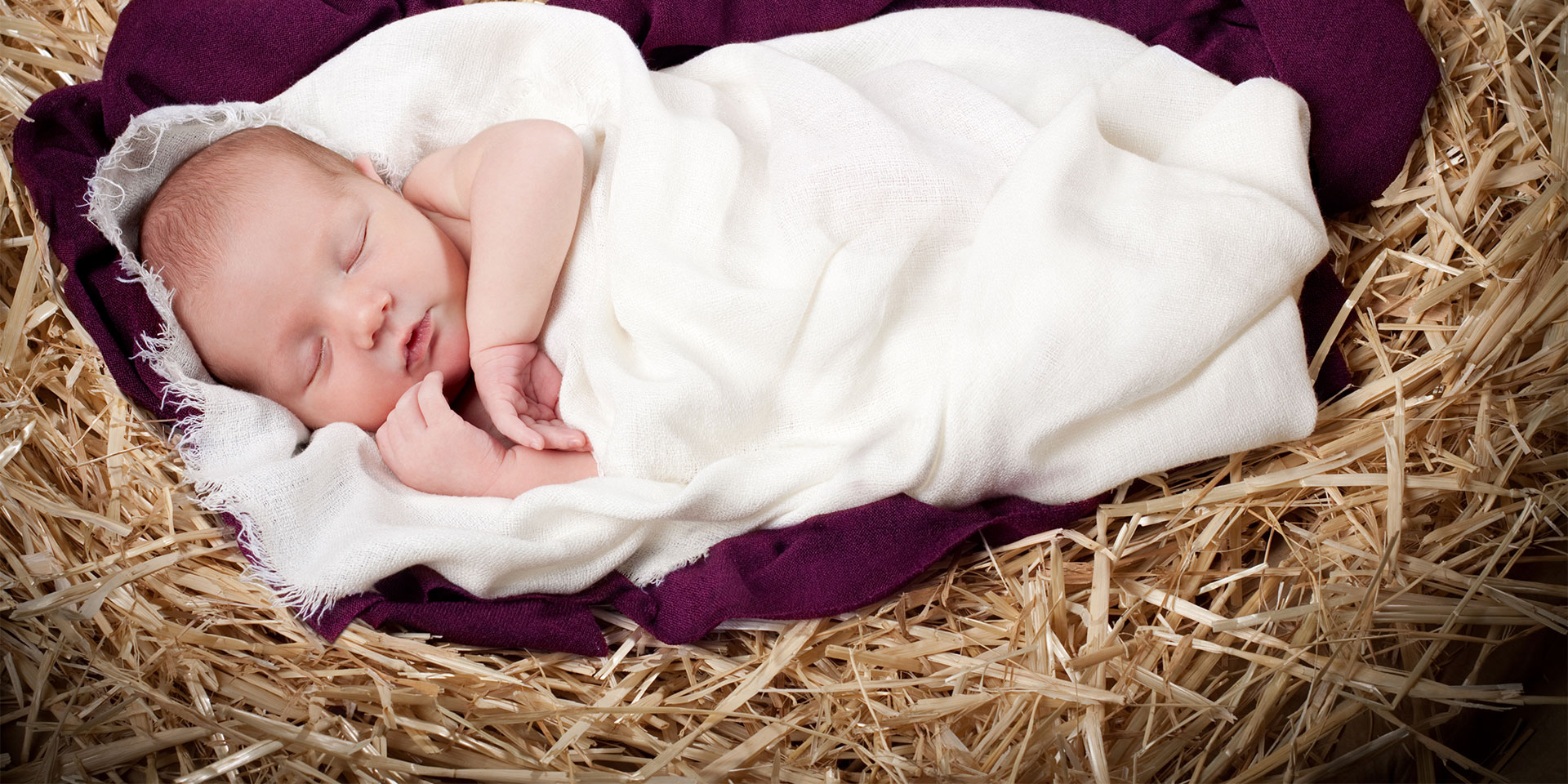The nativity of Jesus gives meaning and hope to all the stories about us and the world in which we live. In the bundle of narratives that have ever been imagined and told, it remains “the most beautiful story in the world.”
We carry within ourselves “an instinctive love of story,” notes British writer Kate Nicholas, author of a book that seeks to help Christians creatively retell the stories of divine intervention in their lives. According to historians and psychologists, this ability to create narratives to make sense of the world is one of the defining characteristics of mankind, points out Nicholas, who continues to share her story with God on her blog, after the cancer she survived in 2014 returned.
The way we tell our life story has a significant impact on the person we become, experts say. “You are your story,” says psychologist Christian Jarrett, emphasising that the narratives about us give meaning to life and a foundation for our identity.
The stories we tell about ourselves reveal who we are, but they also shape and support us at different stages of life—this is the conclusion of a study coordinated by researcher Kate McLean. The way we think and talk about our lives can influence our physical and mental health, academic performances, and political choices. Some psychologists believe that the stories people tell about their lives are the most powerful factor in shaping identity.
The nativity of Jesus, “the most beautiful story in the world”
If the story of our past matters so much in the process of our becoming, how important is it to understand and pass on God’s story? Whenever they examine the stories of their lives, Christians see, beyond the sequence of events, the red thread of divine intervention. Thus, their story becomes part of a bigger story—that of the misunderstood love between God and mankind.
Our image of God, as well as our type of attachment to Divinity, leave their mark on our mental health and well-being, studies say. We are created in His image, and when sin threatened to erase that likeness, we were saved at a price beyond all imaginable value.
Divine intervention in the problem of human suffering easily ranks first in the top of the factors that shape our image of God’s goodness, claims Christian author Herb Montgomery. The birth in a stable in Bethlehem of the One whom “the heavens, even the highest heaven, cannot contain” (1 Kings 8:27) was the beginning of an incredible story designed to dispel any doubt that God wants to be with us forever, no matter how much this reconciliation plan would cost.
And the way heaven has proved its undying love for us, the prodigal sons of the universe, makes the event at Bethlehem “the most beautiful story in the world\And the grandest story ever\The only interesting story that ever happened,”[1] in the words of the poet Charles Péguy.
There is undoubtedly a hunger for stories and a frenzied pursuit of joy at this time of year. But do the stories we repeat to ourselves and the joys we chase reflect the letter and spirit of the story that began in Bethlehem, with a Baby wrapped in cloths and lying in a manger?
Returning to the history described by the Gospels
Analysing the history of Christmas celebration in America, theology professor David O. Taylor concludes that there is a deep issue related to the reflection and dissemination of the story of the birth of the Saviour—and that, however good it may sound, the slogan to put “Christ back into Christmas” does not bring a real solution.
“Perhaps the problem is not whether we remember ‘that Jesus is the reason for the season,’ but that the story of ‘Christmas in America’ looks nothing like the story that Matthew and Luke tell about the birth of Christ,” writes Taylor.
The professor claims that the history of Christmas is a complicated one, shaped by at least four influences: the prohibition of the celebration of the event by the Puritans in the 17th century, the adoption of the holiday and its centring on the family at the beginning of the reign of Queen Victoria, the publication in 1843 of the short story A Christmas Carol, signed by the writer Charles Dickens, and the works of poets and painters of the late 19th and early 20th centuries (illustrators Alexander Anderson and Thomas Nas, for example, created a face, a costume, and a legend for Santa Claus).
A Christmas Carol, the short story written by Dickens six years after Queen Victoria’s accession to the throne, is an example of how myths that are unrelated to the Gospel accounts were created about the Christmas story, Taylor points out.
Although we point an accusing finger at those Christmas movies that have replaced any reference to the real reason for the holiday with the concept of the “true spirit of Christmas,” (a mixture of goodwill, camaraderie, joy, and vague remnants of faith), stripping Christmas of its defining elements occurred earlier, observes the author of an analysis on Dickens’s book.
When judging the 19th century from the books it produced, C.S. Lewis noted in Charles Dickens’s story the absence of “any interest in the Incarnation.” Mary, the Magi and the angels are replaced by “spirits” of his own invention and even the animals mentioned in the Scripture (the ox and the donkey) are replaced by the turkey and the goose from the bird shop.
Perhaps the Christmas holiday is not at all wrong if we let it be what it already is—a holiday that has taken on an increasingly secular form, changing in response to our need to spend time with family and friends at the end of the year—without striving to make more room in it for a miniaturised Jesus, diminished in the noise of competing stories which are tailored to our tastes and interests.
On the other hand, the professor advocates for a church willing to let itself be shaped more by the true history of Christmas, as it is presented by the evangelists Luke and Matthew. Because here, at the heart of the authentic story and its amazing details, are lessons that are easily missed when we allow ourselves to be shaped by our own stories of joy, perfection and “magic.”
The birth of Jesus: a history marked by suffering
If we examine every seam of the story of the Incarnation, we will find everywhere stories of hardship, suffering, renunciation and loss, notes Taylor, urging his readers to discover that suffering marks the experience of every character in this narrative.
“Incarnation is like a new creation,”[2] writes Professor Georges Stéveny, noting that while the first was marked by joy, the second creation is defined by suffering. Mary’s response to the unusual news brought by the angel, “I am the Lord’s servant…May your word to me be fulfilled” (Luke 1:38), is proof of the acceptance of the divine plan despite the amount of suffering that its fulfilment entailed.
It would be Mary’s duty to inform Joseph of the pregnancy and the conversation with the angel, exposing herself to the legitimate suspicions of her future husband and the risk of being abandoned. We can only guess some part of the turmoil and suffering of Joseph, who decides to leave his fiancée in secret, so as not to make her situation even more difficult, but we know nothing about how the shame of the dishonourable pregnancy affected the members of the extended families.
The story of loss and tragedy that occurs with the birth of Jesus also includes the massacre in Bethlehem, in which male infants under the age of two fell victim to the thirst for power of a king who felt his throne was threatened.
“Nine months of awkward explanations, the lingering scent of scandal—it seems almost as if God arranged the most humiliating circumstances possible for his entrance,” points out Philip Yancey, describing how great the contrast was between the reporting of two miracles that happened a short distance from each other.
Elizabeth, Mary’s relative, can speak freely of the blessing their family received, and their neighbours and relatives gather to celebrate John’s birth; following the miraculous healing of Zacharias, the whole land speaks with amazement about the newly-born baby and about the destiny that awaits him.
Mary gives birth to Jesus in a stable, far from home. The miracle of Jesus’ coming is shrouded in shame and will continue to be, over the years, a source of mocking looks and words. Shortly after the birth of the baby, Joseph and Mary are forced to take refuge in Egypt—a difficult decision for a poor family and probably impossible to implement if it were not for the Magi’s generous gifts.
At His birth, Jesus is not greeted with joy and gratitude by those whom He came to save, and not even with a shred of goodwill with which a child is received into our world: “…there was no guest room available for them” (Luke 2:7). Not even His death is that of a hero—hanging between heaven and earth, mocked by leaders and the crowd and forsaken by His people, He dies as an evil-doer, disregarded until His last breath.
The story of the Incarnation is marked by suffering, and God’s pain far exceeds the suffering of all the characters who are part of this story. The Gospels present us with a bare God, stripped of Himself, willing to endure everything that the malice of people and demons could devise. After He became man, He “remained man… until the most desperate human situation,” enduring “torments that humans cannot imagine,”[3] writes Georges Stéveny.
“And on earth peace to those on whom his favour rests”
Generosity, goodwill, and harmony between the people close to us and those from afar—these are the ingredients we hope for during “the most wonderful time of the year,” but to what extent do we find them in the story of His birth, as it is explained by Matthew the publican and Luke the doctor?
Christmas is seen less as a remembrance of the birth of Jesus Christ and hardly as a key element of the plan to save mankind, points out the writer Joshua Hill, noting that we have lost the spiritual message of the event in the expectation of being better and more generous or even bringing peace on earth. The idea of peace that will envelop humanity on the occasion of the birth of Jesus is taken from Scripture, but it is misunderstood, the author believes.
The verse in Luke 2:14 (“Glory to God in the highest heaven, and on earth peace to those on whom his favour rests”) does not refer to a man-made peace by people’s power—the angels did not sing about the hope that our planet would become a place of peace if we just treated each other with more kindness. In fact, if we want to discern the meaning of the peace announced by the angelic choir, we will discover, in Paul’s letter to the Ephesians, two dimensions of it—a peace concluded between God and mankind and also peace between the people who receive Jesus, becoming heirs of the same promise.
Moreover, we do not find in the Bible the promise of peace between nations, Hill points out—we are not moving towards a moment of ending bloodshed, tensions, and injustice, but we expect a progressive deterioration of the relationship between nations and individuals (Matthew 24:7-9), which will culminate in the end of all things and the creation of a new earth, whose peace will never be disturbed again.
The distorted understanding of the idea of peace comes from a superficial reception of the message conveyed by the angels, emphasises Christian author Paul Negrut, who says, in essence, that authentic peace is only possible if people relate correctly to God and live for His glory.
The perfect Christmas vs. the perfect Gift
There is this pressure to live the perfect Christmas. Some of those interested only in the secular side of the holiday openly admit it, and those who try to stick to its religious meanings have said it, too.
For some, perfection resides in a harmonious, fulfilled family that gathers around the table to be together. Therefore, in this period when people are searching for each other and coming together, it is easier than ever for us to feel that “peace on earth” comes exclusively in the shape of a whole family, which comes together in a festive setting, notes author Hannah King. But what if you are not part of a large family, and not even a happy one? What if you can’t even utter the word family without feeling the pain of a never-healed void or the shame of a failure that seems magnified under the idyllic colours of the holidays?
Even if family is a gift from God, the story of the Incarnation does not bring to the fore a perfect family, regardless of how much we have idealised it over time. “Our image of family at Christmas—well-decorated, wealthy, happy, and intact—actually sits uneasily beside the gospel of the first,” writes Bible professor Esau McCaulley.
A single mother, an adoptive father, a not-so-great financial situation—it’s hard to find perfection in the family of Jesus, at least if you look at things from a human perspective. And the authors of the Gospels do not shy away from showing that at certain times, to say the least, the attitudes and relationships of Jesus’s family members were painfully far from perfect (John 7:5; Mark 3:21).
Besides, not perfection, but obedience is emphasised in the unusual experience of this family, King points out: Mary and Joseph submit to God’s will, even if obedience implies sacrifice and humility.
The story of Jesus’ birth is not about perfection and magic, but about obedience and hope in any circumstance. It is about God’s power to make His presence felt where things don’t go perfectly or even reasonably. It’s about the fact that divine help is easier to receive by those whose lives are falling apart, because people with perfect lives do not easily find a resting place for Him.
The story of the Nativity in Bethlehem is part of a larger story that we know less and less about—a 2014 British survey found that a third of parents believed that the Harry Potter story was inspired by the Bible, and that many children between the ages of 8 and 15 had heard nothing about famous biblical themes such as the birth of Jesus (25%), the crucifixion (43%) or creation (63%). It is a history that begins with the creation of a perfect world and ends with the eradication of evil and the restoration of the human being.
Jesus’ birth interrupts the tragedy triggered by mankind’s rebellion and brings hope for a change that goes beyond human will and effort, surviving even after all the holiday lights have been turned off.
The most beautiful story in the world begins with the God who leaves His inaccessible refuge, descends into the darkness and disorder of our world, receives the manger and the cross that we hold out to Him and offers us, in exchange, a life, a homeland, and a throne.
Carmen Lăiu is an editor at Signs of the Times Romania and ST Network.



















